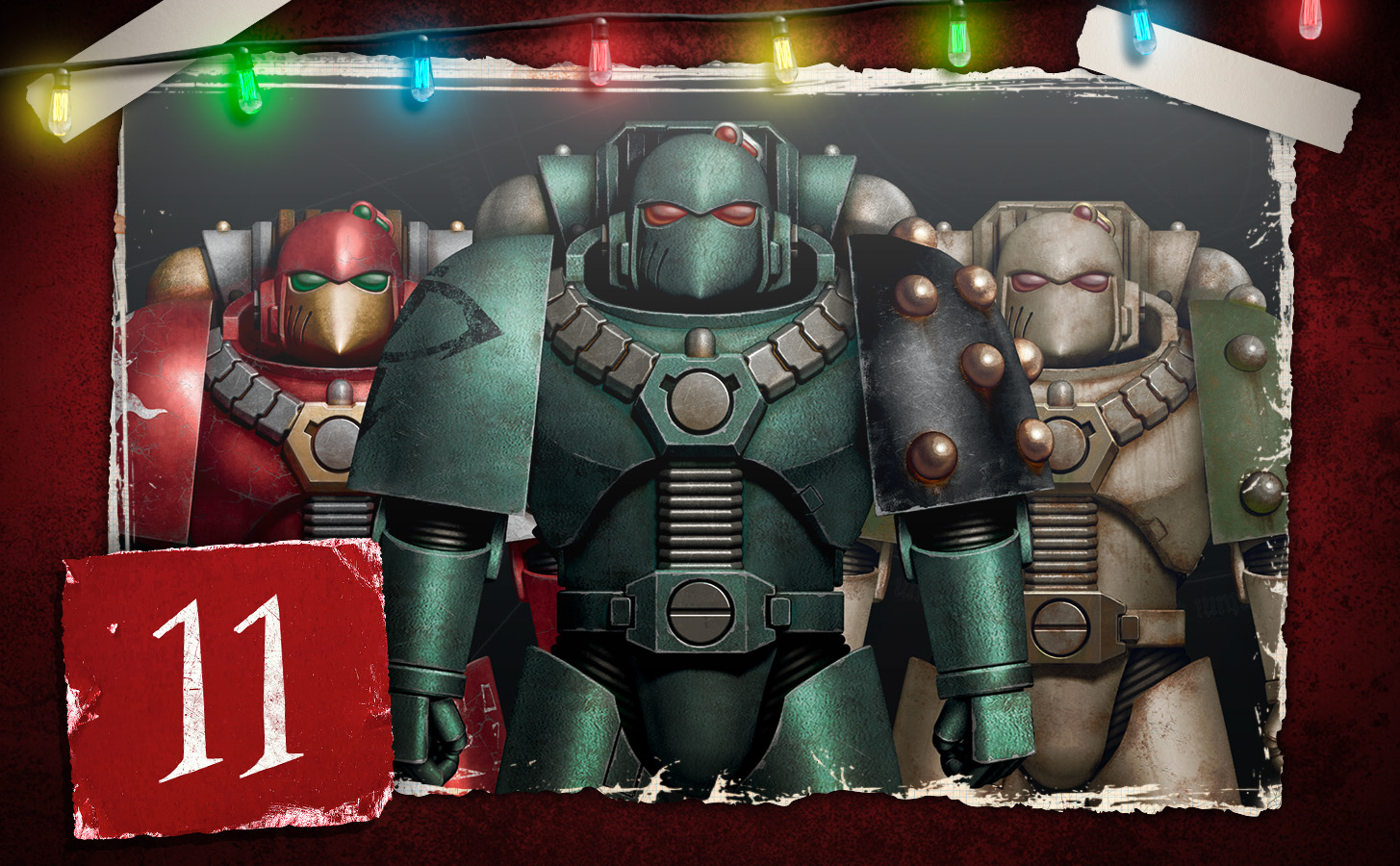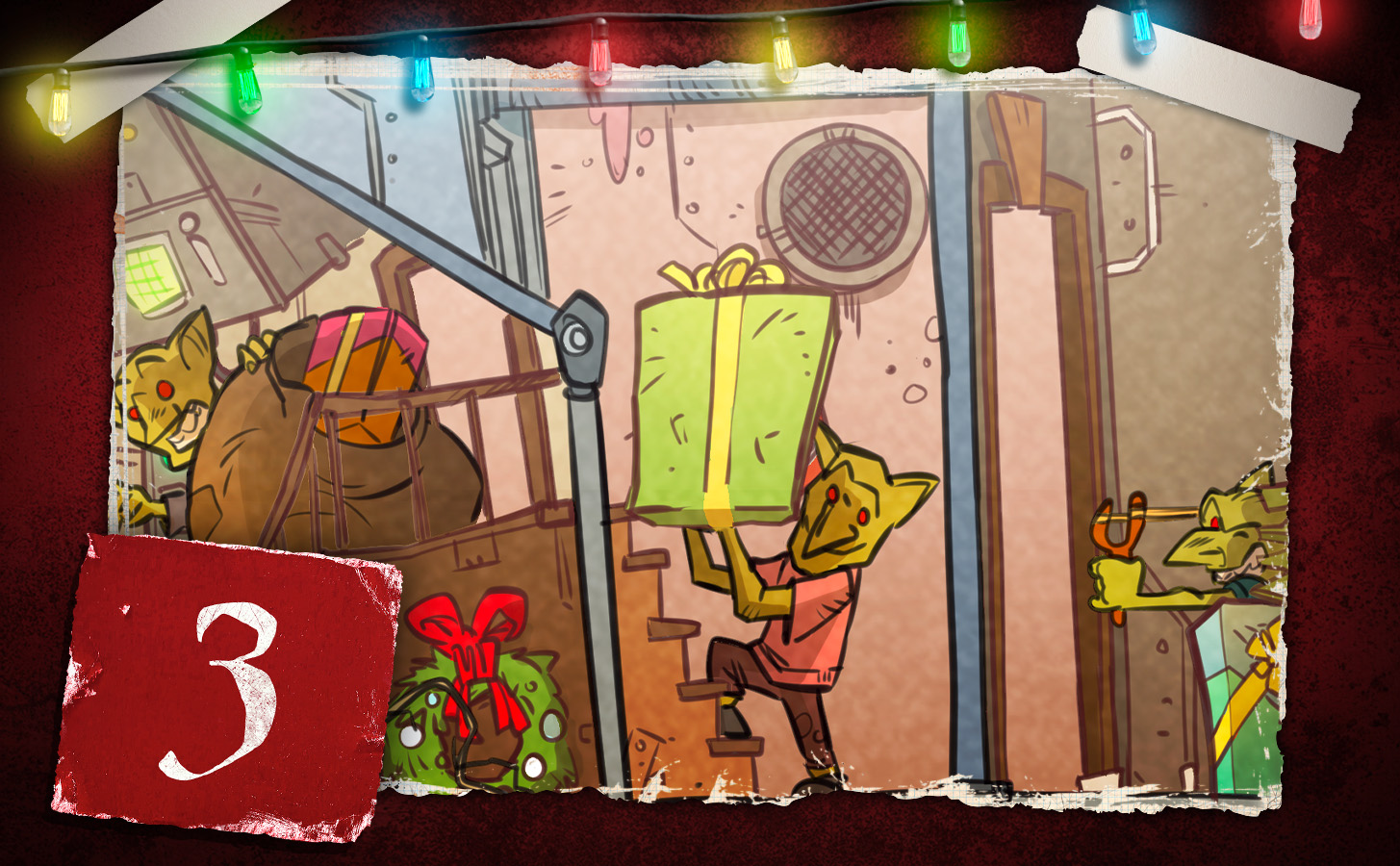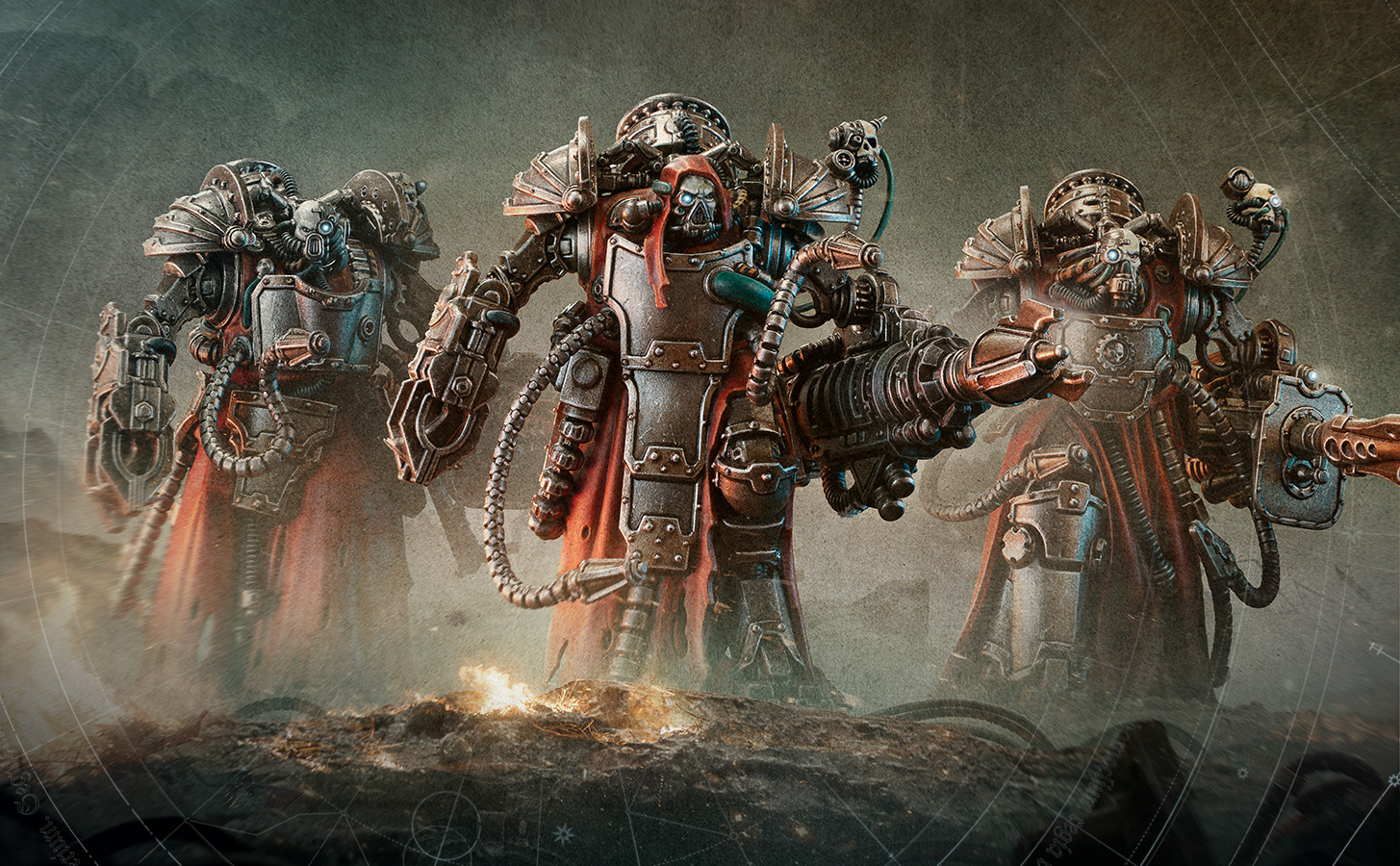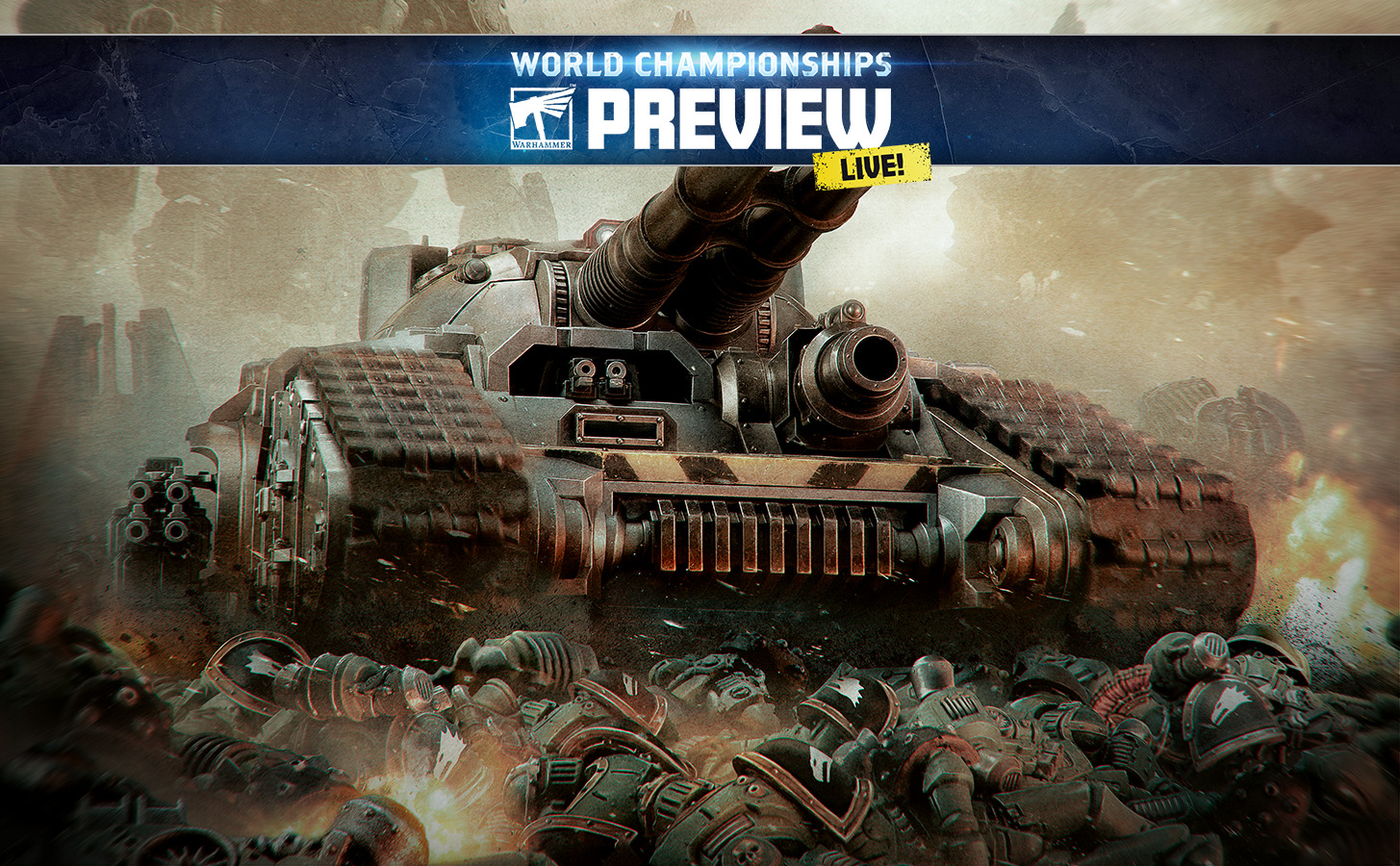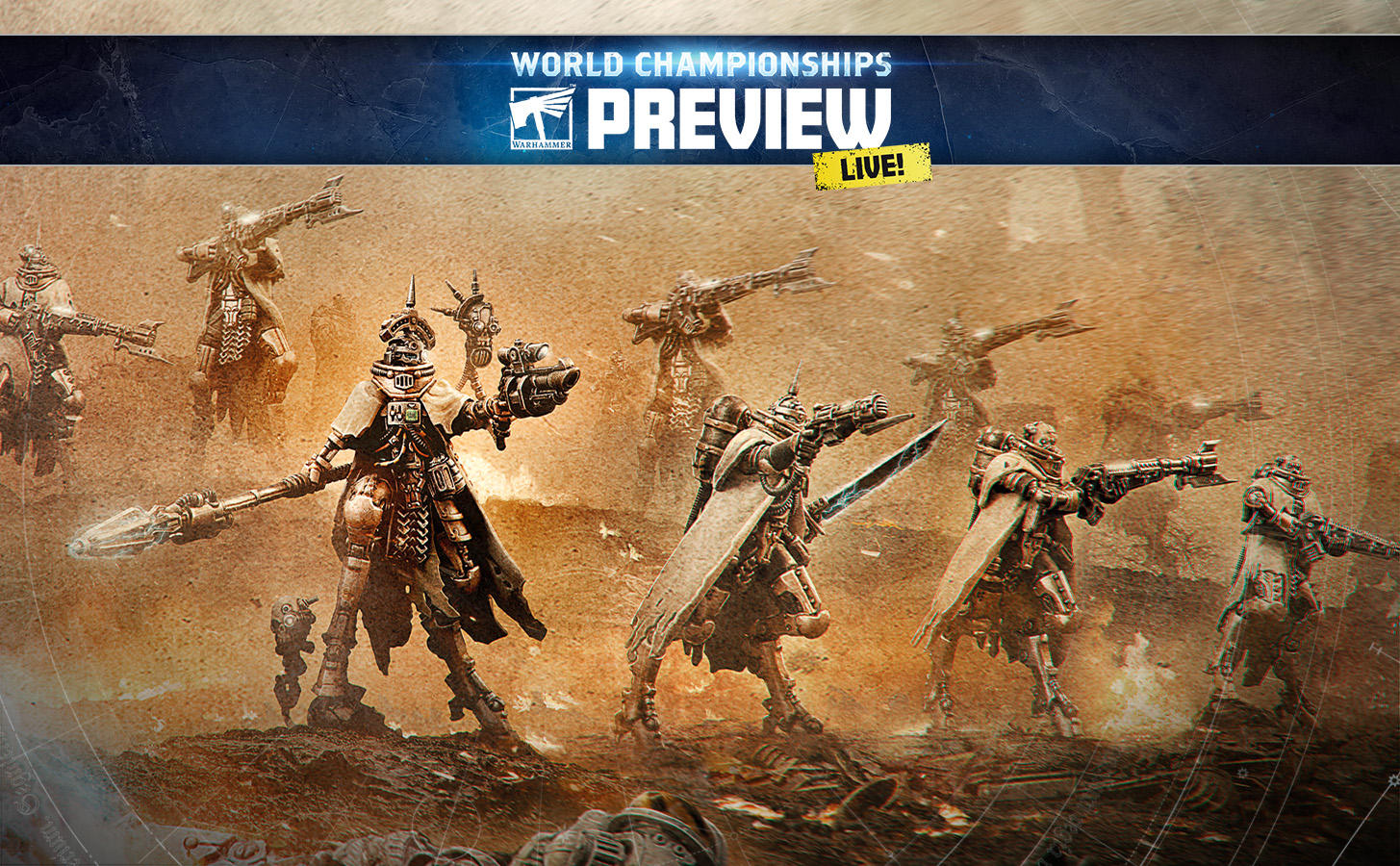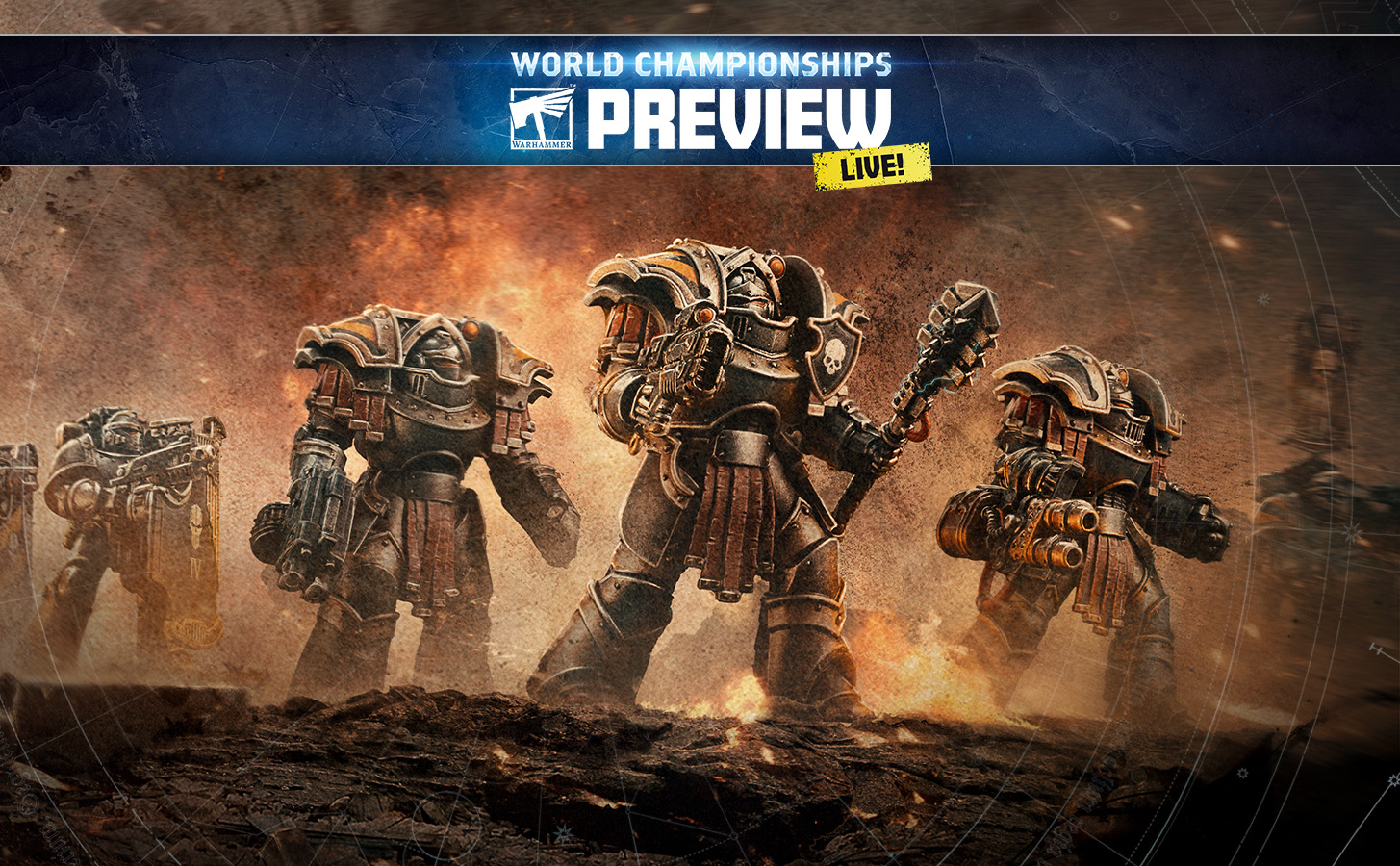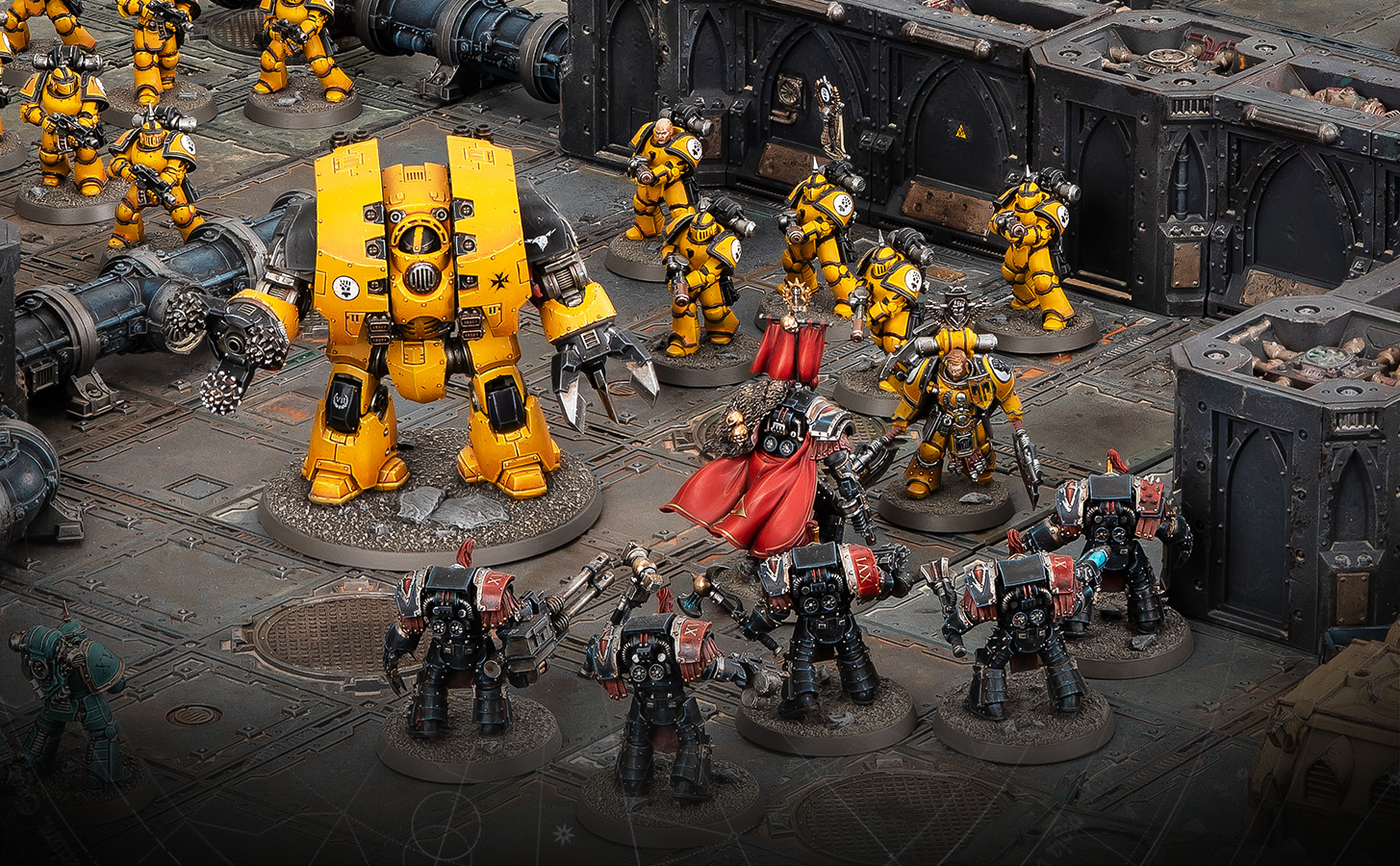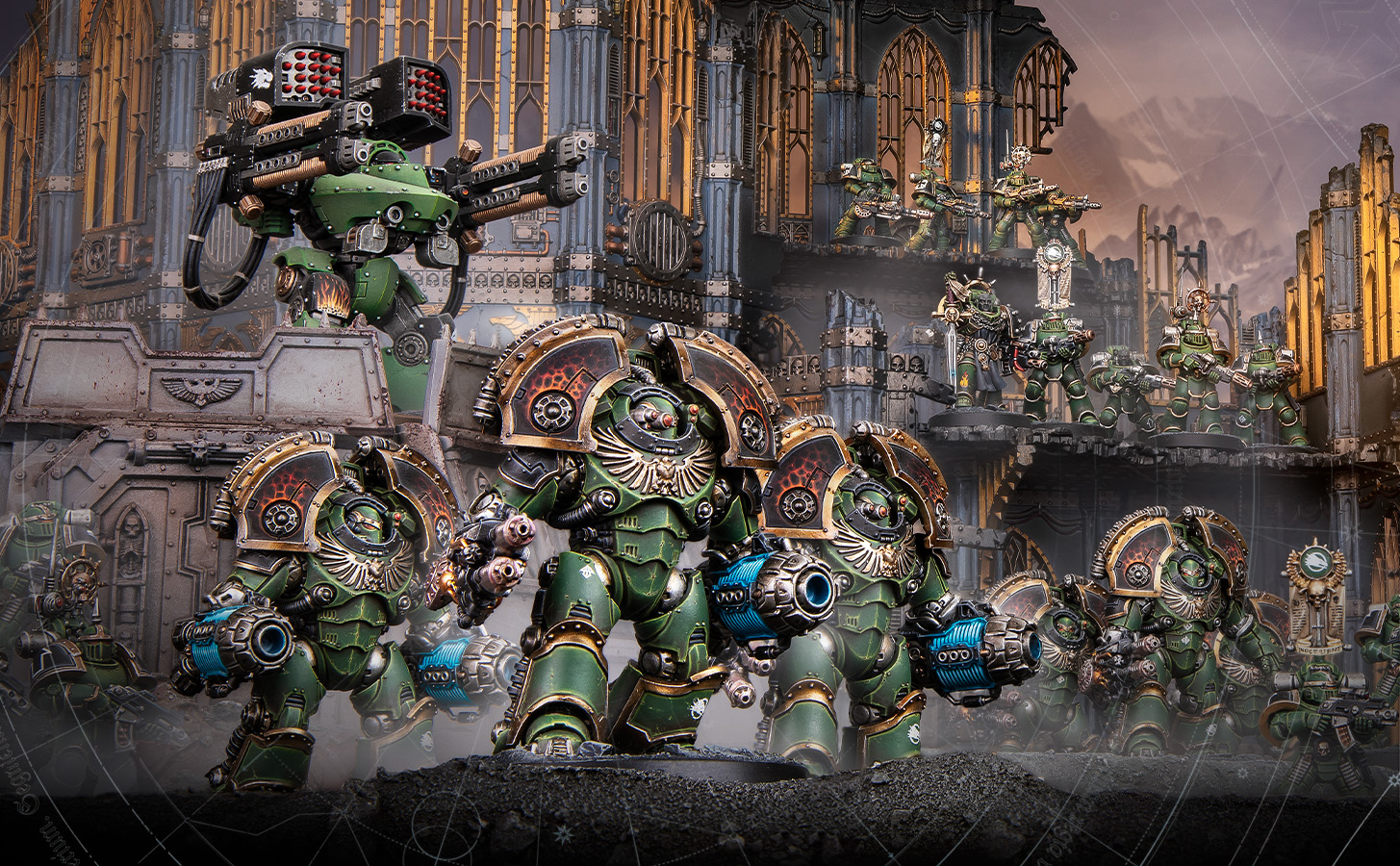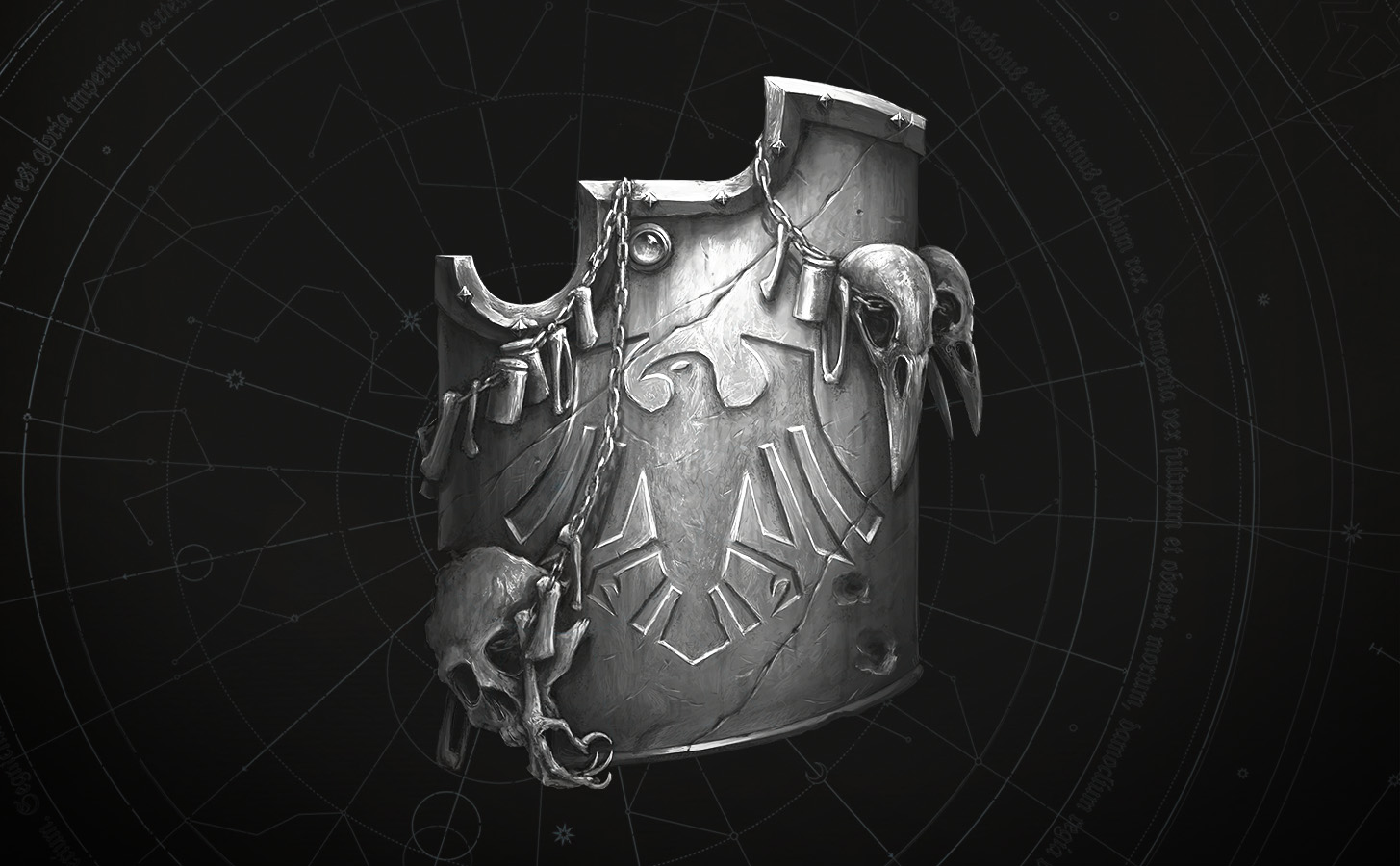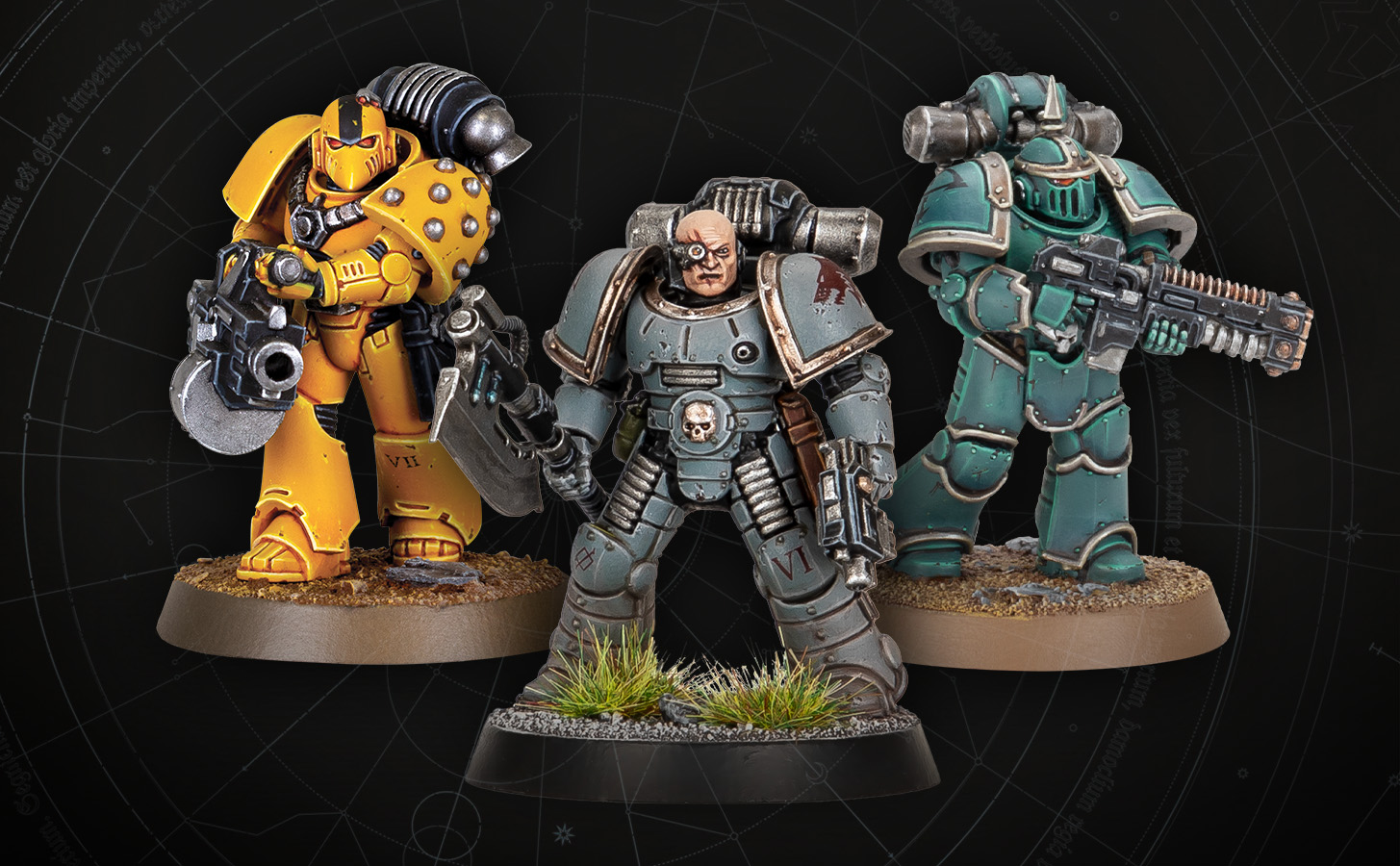In our third and final round table for the new edition of Warhammer: The Horus Heresy – Age of Darkness, we’re talking to the team behind the rules.

Andy (Product manager): We wanted to start a new journey with the Journals Tactica, but we knew the latest edition of Age of Darkness had to feel familiar for existing players. It’s not a completely new set of principles and ideas, but there are cool new elements: Gambits, Tactical Statuses, and so on.
Neil (Lead writer): There won’t be much here that changes how your current army works; you might need another Centurion for the new Force Organisation, but that’s about it. Instead, we’ve added more opportunity to exploit weapons and tactics that were not used in previous editions, with tweaked Reactions, Challenges and Gambits, and new Statuses and rules for charging. These also help differentiate the game from other things that we create in the Warhammer studio. This is a longer, more complex, narrative-themed wargame.

Profile changes and Advanced Characteristics
James (Games developer): The changes to the unit profiles may seem like a lot on the surface but they flow into the new system very well. We reorganised them to feed into the new Tactical Statuses, which have a lot of downstream effects, including making old weapons viable again.
Neil: The Advanced Characteristics have their roots way back in Rogue Trader. While the legacy of those rules is important to the Horus Heresy and Warhammer as a whole, nostalgia is not the only reason we've brought them back. The true purpose is to give the various leaders, captains and warlords of the Age of Darkness more of a role.
In previous editions of the game, Leadership covered almost everything outside of pure physical ability, meaning that Praetors were the best at leading troops, resisting psychic powers, engaging with scenery and all the other tasks. This left very little space for other, more specialised, leaders to shine, which often left things like Apothecaries oddly capable as military leaders.
We can now allow Techmarines to excel at fixing vehicles (Intelligence) without needing an inflated Leadership, while Librarians can be masters of the esoteric (Willpower), and Centurions can steady the line (Cool). It’s about giving breadth to all the characters that populate the stories of the Horus Heresy, a chance for each to be unique, giving them cool specialisations that actually impact gameplay.
Also it means we can define, once and for all, which Primarch has the most Cool…*
Andy: As players get to grips with the new system we expect to see more use of the niche Consuls and characters, as opposed to a single Praetor who could do everything on his own. As with other changes, like the Tactical Statuses, it gives players ways to engage with the battle and their opponent outside of simple slaughter (though World Eaters players can still stick to slaughter if they'd prefer – it’s still one of the main ways to claim victory). Charging across the battlefield to heroically restore a pinned-down Kratos can sometimes be as important as winning a key Challenge.
Tactical Statuses
-qo4r0qn1wq.jpg)
PINNED
The Pinned Status reflects a Unit that has been forced to take cover in the
face of overwhelming firepower or the sudden crack of a sniper’s rifle.
SUPPRESSED
The Suppressed Status reflects a Unit that is distracted and confused by heavy
enemy fire, environmental effects or psychological warfare.
STUNNED
The Stunned Status reflects a Unit rendered insensible or stopped in its
tracks by the sheer force of an impact, explosion or other battlefield event.
ROUTED
The Routed Status reflects a Unit that has suffered such a catastrophic reversal
that it must fall back from the front line in order to regroup and recover.
James: There were lots of overlapping small rules – such as Pinning, Blind and Concussive – that articulated the same concept. We boiled them down to three statuses: Stunned, Suppressed and Pinned, and brought Routed into the system too. It now allows you to express all the sorts of things that can happen to troops in a much simpler way, with broader applications. Some troops may be easy to panic but hard to suppress, for instance, which informs what kind of weapons you might deploy against them.
Neil: It factors into the narrative: of course flamers should make people run away from combat in sheer panic!
Andy: Weapon families weren’t always differentiated well in the previous rules, so that’s something we’ve tried to focus on here. Damage did exist, but was hidden away in the Brutal special rule, so we’ve looked at how to present this information more intuitively.
Dreadnoughts and Damage

Neil: Dreadnoughts are a prime example, as the only reliable way to damage them was to chip away at their Wounds. The new Damage, Critical Hits, and Heavy special rule means that a unit of Devastators with autocannons or lascannons can chew them up.
James: It makes them more vulnerable to the correct weapons, but still relatively impervious to those weapons that aren't designed to destroy them.
Neil: They have their own advantages – they’re terrifying on the charge, but they also have a uniquely high Cool statistic, so the psychological effects of an artillery bombardment can just be shrugged off. They now have a tactical role, rather than just being versatile and incredibly tough to kill.
James: With weapons having their own niches now, I don’t think we’ll see the predicted domination of things like multi-meltas. While they’re excellent at destroying vehicles from close range, the game is won and lost on objectives, and Tactical Squads are a huge part of that. A 10-man multi-melta squad will probably kill half a dozen Space Marines a turn, which means they’re still scoring. If you take anti-infantry weapons which suppress or rout them they won’t score, and that’s a far more efficient use of points.
Objectives

Tactical Squads were always compulsory for Force Organisation, but they didn’t do much beforehand. Now they’re a key part of your army due to the objectives – as they should be, given the narrative. They now have better damage output with the changes to bolters and Fury of the Legion, but with Line they become one of the best ways of scoring. I would expect to see three squads in most armies.
Neil: They don’t do the most damage compared with some other choices, but they’re primarily there to score VPs and add additional damage here and there.
James: They’ll be behind your Terminators and other units with the Vanguard special rule, who score points from clearing objectives which the Tactical Marines then capture and provide fire support from. There’s a whole game of paper-scissors-stone, choosing the right units to hold objectives and the right ones to flush them off!
Hit rolls
Neil: The change to Hit rolls is fun. While the maths remains the same, there have been changes to Snap Shots and really high Ballistic Skills. Previously, BS was relevant between two and five, by which point you’re generally already hitting on a 2+.
We’ve done a lot to give more use to the span of numbers, to bolster Assassins and characters like Exodus. Snap shots now rely on BS; Space Marines used to hit them on a six, but now it’s a five because they’re BS4, whereas Solar Auxilia hit on sixes.

Models with a BS above six are even better marksmen, hitting on a 2+ and causing a Critical Hit on a 6+ – this offers an extra point of Damage and an automatic Wound. Your marksman characters are now more valuable with that possibility for extra hurt.
Charges
James: We really like the new Charge sub-phase: charges tell a much stronger story, and they’re mechanically more reliable. There are fewer long-bomb 12” charges, but 4-5” inch charges should be more certain, and you don’t get hung out to dry so often.
Charges are now broken into chunks. You have a set up move, after which you fire your pistols. This has tactical nuance – do you fire and risk killing the closer models? I love that Terminators are bulky enough to use their combi-bolters as pistols on the charge, using the Assault special rule.
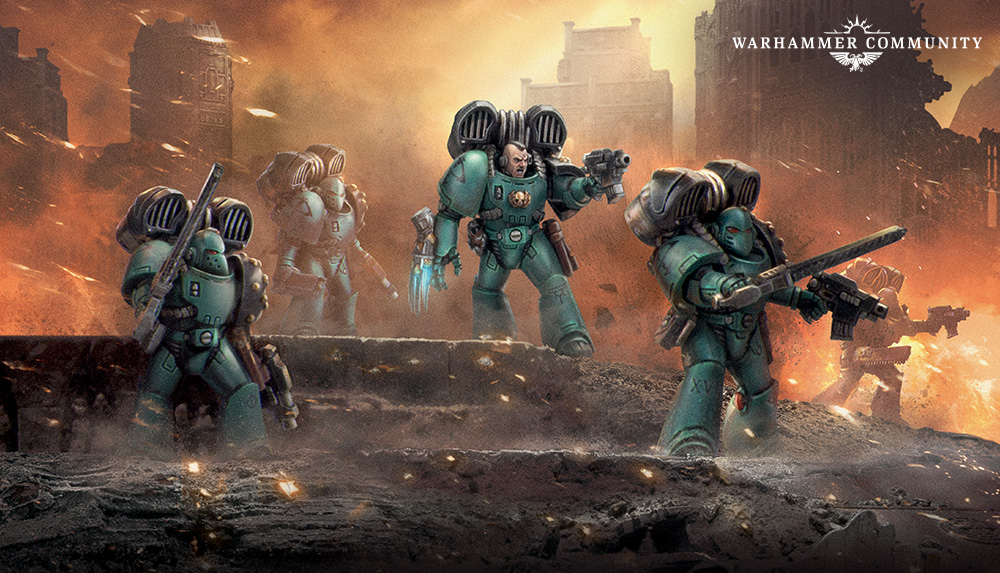
Neil: With the previous rules you could describe all that – but now we’ve got steps that involve the initial rush forward, the flamers and other appropriate weapons returning fire, without anything as odd as a pistol giving you an extra power fist attack.
James: The weapons in the Contemptor’s power fists now count as assault weapons, so you can fire as the Dreadnought charges in, before it starts swinging.
Challenges
Andy: The Challenge sub-phase is there to provide framing for all these heroic engagements. It’s much more cinematic.
James: That was a hook of a lot of the new rules, we wanted to evoke the animations, the lore and the novels. The most memorable parts of the Black Library series are when the Primarchs and other big names fight, like when Sigismund takes on Khârn at the Siege of Terra.
Neil: Because Damage didn’t exist in the previous edition, two Primarchs could fight for the entire game. Challenges are now a bit more lethal, and often become the main event of a game.

James: When you’ve had a bit of practice, you’ll find they’re quick to resolve as you learn the core principles and the Gambits. Without warlord traits, they became a key way of telling the story of a character in the game. Sevatar’s underhanded fighting style, where he’ll kick up dirt and stab you before you can even react, adds a lot to the experience.
Neil: We didn’t design these characters to be equals, and so they all have pros and cons. Sigismund is meant to be unparalleled, and if he’s fighting anyone other than a Primarch, they’re already in trouble and you’ll need to start stacking benefits in your favour. Erebus has a Gambit that might not win many fights, but will always feel correct for the character…
James: Perturabo can just step aside and let his people shoot you.
Neil: More than almost anything in the game, Gambits have been designed to propel that narrative forward before we worry about win conditions. Some of the core Gambits are fairly situational: one reduces your efficacy in the challenge, but ensures you get more Victory Points for success. It’s useful in place of performing gratuitous overkill on a Consul!

We want people to keep evolving their armies, so if one particular tactic becomes pervasive in your friend’s army, there should be something you can change in your list in order to have a different approach and perhaps a better chance of winning a battle.
The Rulebook
Andy: Better formatting for the rules was a key point from very early on. They’re now all (roughly) broken into three points. The italic text is the ‘theatre of the mind’, designed to get you into the narrative. The bold text is the shorthand version of the rule, and the full body text goes into every single piece of detail you could need.
Neil: It lets you scan through really quickly. They’re all laid out step by step, with clear timings when things happen.
James: Once you’ve read and learned the rules you’re rarely going to need those extra steps, but they’re there for when you need to get into the details.
Thanks guys! We can’t wait to crack into the box when it’s out at the end of July. There’ll be plenty more to come from Warhammer: The Horus Heresy before then – and afterwards…
* It’s Horus, who’s so cool they named a whole game after him, followed by Lorgar.





